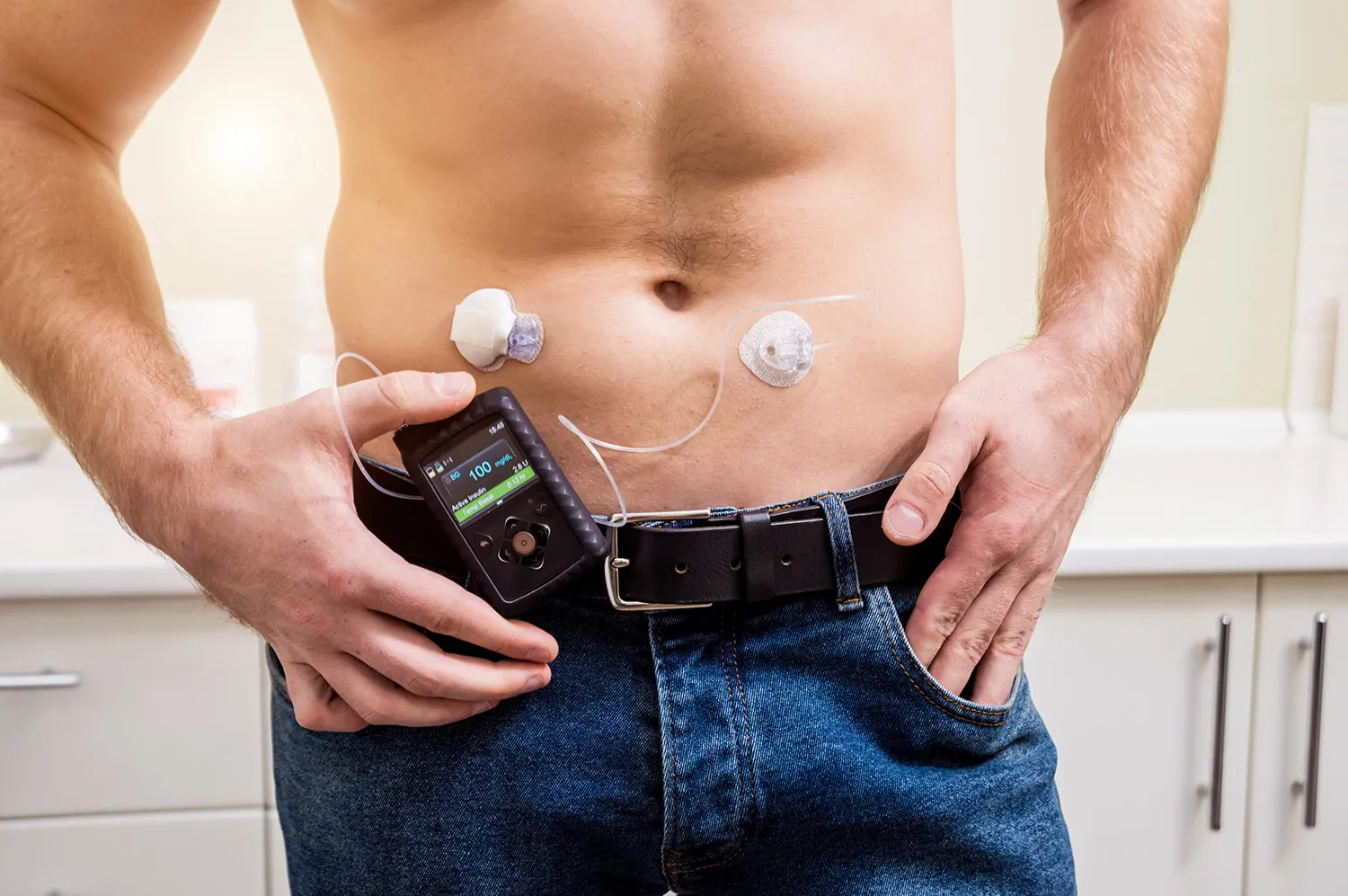
Insulin Pump Therapy
Insulin pumps are small devices that contain a reservoir of rapid-acting insulin that is infused through a small cannula inserted in the fat just below the skin, at a very low rate. Prior to each meal, a bolus of the same insulin is infused through the cannula. The dose of the bolus has to be set manually each time, using the controls on the pump or an accompanying handset. Many pumps have an automated bolus calculator to work out the correct dose based on the current glucose level and anticipated carbohydrate intake.
A big advantage of insulin pump therapy is the ability to vary the basal insulin rate according to the need at different times of day and night. This is pre-programmed to maintain glucose levels stable through the 24-hour period. It is also possible to override this, for example by reducing the basal rate or stopping it altogether for a time during periods of increased physical activity. The other main advantage is that there is no need for frequent daily injections; however, the cannula (or patch pump) does need to be changed once every two to three days.
Some continuous glucose monitoring (CGM) devices work together with insulin pumps in a 'hybrid closed loop' system, the first step towards an artificial pancreas. These systems adjust the basal rate continually according to the glucose level, while boluses generally need to be calculated and delivered by the user.
I can advise on the different insulin pumps and monitoring systems currently available and can make recommendations based on each person's individual needs and preferences. It is important to be aware that access to pumps and CGM systems is governed by specific criteria within the NHS.
